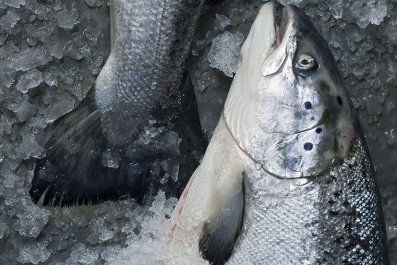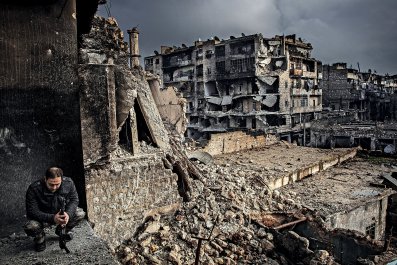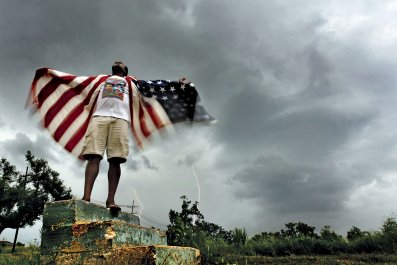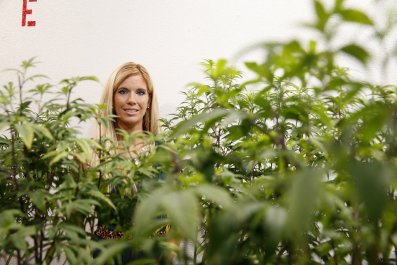The minimum internal temperature that the U.S. government recommends for poultry is 165 degrees Fahrenheit. That is also, give or take a couple of degrees, the temperature Iranians were subjected to on July 31 in the city of Bandar Mahshahr, in the country's southwest.
The "real feel" temperature of 163 degrees was a combination of an actual temperature of 115 and a dew point temperature of 90. It was part of a heat wave that has baked the city recently, caused by "an unusually strong dome of hot air across the Middle East," says Anthony Sagliani, international meteorologist at AccuWeather. Combined with "extreme humidity," temperatures are on track to constitute one of the hottest summers ever in Iran. This, for a country that has an average summer temperature of around 84.
Monthly and all-time record high temperatures in the northwest U.S., like 110 in Omak, Washington, and 105 in Bonners Ferry, Idaho, could also make 2015 a record-breaking year for heat in America. Surface temperature across the U.S. has risen by 0.13 each decade since 1901, with temperatures increasing the most in the country's north and west, as well as in Alaska, according to the Environmental Protection Agency.
The National Weather Service issues an excessive heat warning, its most severe alarm, when temperatures are expected to be at least 105 for two days, combined with nighttime readings that will not drop below 75. The threshold for issuing warnings varies throughout the country, as some states, like those in the southeast, are more used to dealing with extreme heat than their northerly neighbors.
Last year was Earth's hottest on record. Climate change–induced increases in the intensity and frequency of heat waves prompted the United Nations to issue its first-ever guidelines for dealing with them in July. Iran isn't the only country in the Middle East that felt the wrath of extreme heat this year. In the Zaatari refugee camp in Jordan, where temperatures reached 107 in August, some of the camp's 83,000 residents fried an egg using natural heat. Deadly heat waves hit Asia in June, killing 2,500 people in India and 2,000 in Pakistan. Dozens died in Egypt this month when temperatures reached 116.
"As science is telling us loud and clear," U.N. Secretary-General Ban Ki-moon said at the U.N.'s climate change negotiations in June, "we have only a few short years in which to do what is needed to have a reasonable chance of staying within the internationally agreed temperature-rise threshold of 2 degrees [Celsius]."






















